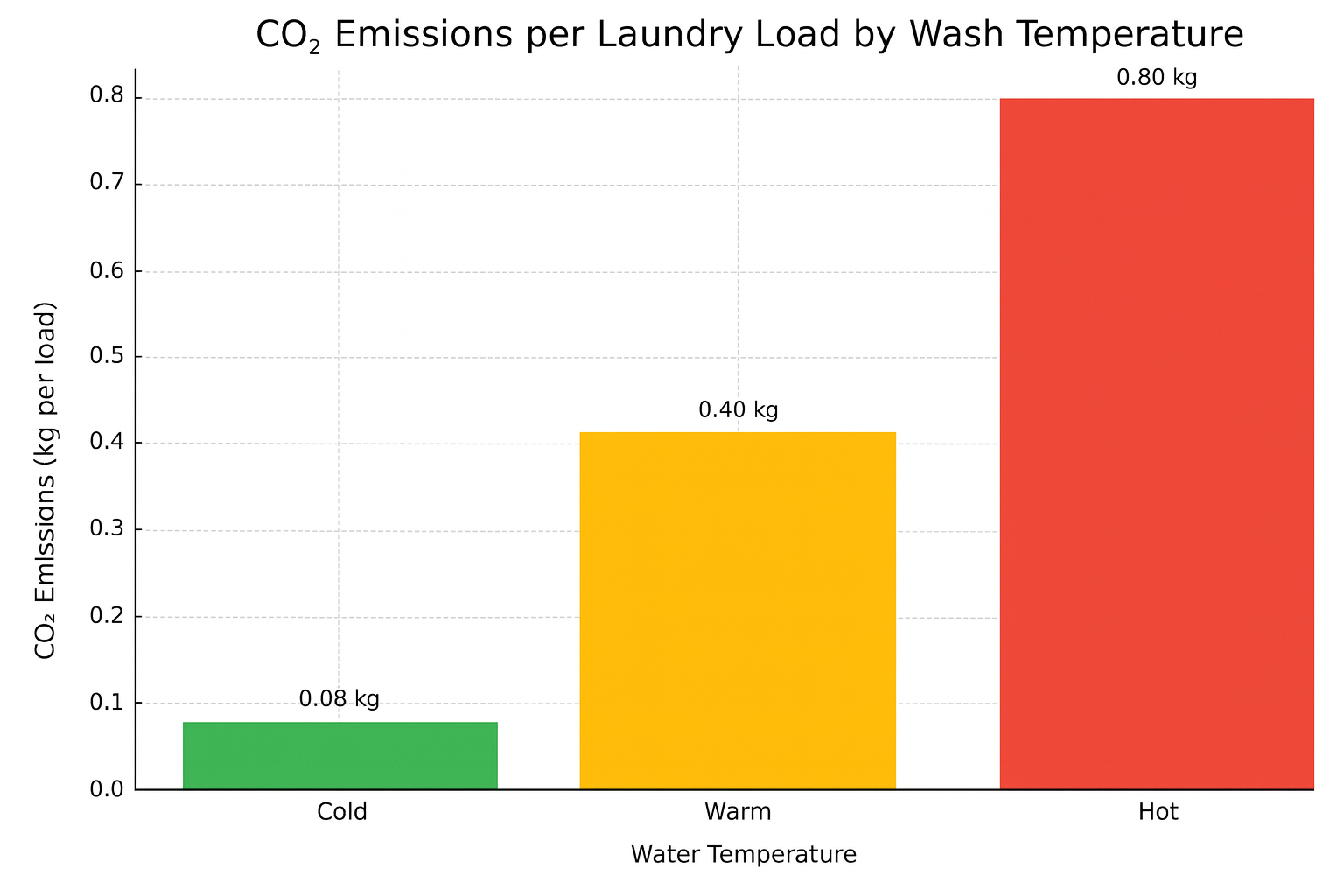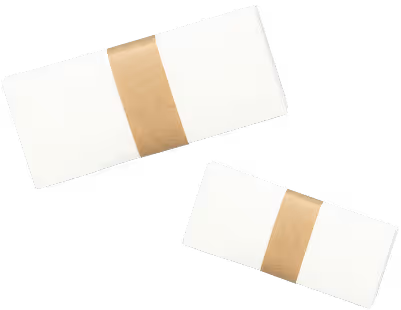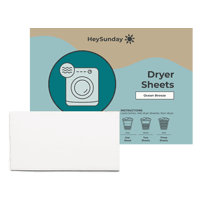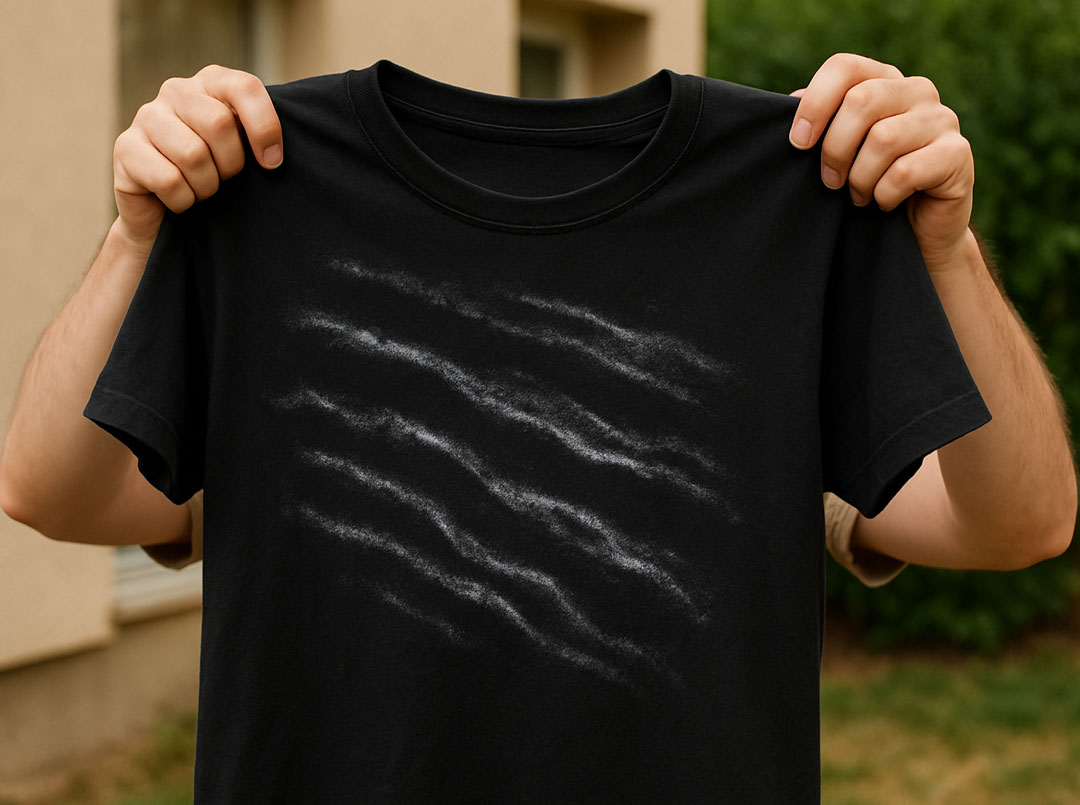
Greenest Laundry Detergent: Sheets vs Liquid vs Pods
You probably don’t think much about laundry detergent beyond whether it gets the job done. Most of us don’t. It’s one of those everyday products we grab at the store on autopilot. You know the routine: toss it in the cart, pop it in the washer, and move on.
But behind the bottle (or box or pod) is something bigger.
The format of your detergent, like how it’s made, packaged, shipped, and used, can change your environmental impact more than you’d guess. Some choices weigh heavier on the environment than others. Some help lighten the load. And now, thanks to new 2025 life-cycle assessment (LCA) data, we’ve got real numbers to prove the point.
This piece looks at how detergent sheets, liquids, and pods stack up across every stage of their life: from manufacturing and transport to how they behave in your machine.
If you’re already trying to live a little more eco-friendly, this is worth your attention.
TLDR for Eco-Warriors on a Time Crunch
When it comes to environmental impact, laundry detergent sheets are the clear winner. Sheets outperform liquids and pods significantly when comparing shipping weight, water usage, and performance at colder temperatures. Here’s how they stack up in terms of waste per load.
Methodology of Life Cycle Assessment
Before we get into the results, here’s how the data was measured.
Life-cycle assessment, or LCA for short, is how researchers look at a product’s total environmental impact. Not just what it does in your home, but what it takes to create, move, use, and eventually dispose of it. Every stage from start to finish.
This full view is often called “cradle to grave.” For something like laundry detergent, it means looking at each part of the process:
Raw materials
This is what goes into the product, including the base ingredients (like surfactants, softeners, and stabilizers) along with water, dyes, and fragrances. Some ingredients are naturally sourced. Others may take more energy to produce or refine.
Manufacturing
The energy and resources needed to turn those raw materials into a finished detergent make a difference. That covers everything from heating and mixing to bottling and packaging, plus any waste that’s created in the process.
Packaging and shipping
The kind of packaging is used, how much of it there is, and how far it all has to travel. Heavier formats like liquid jugs create more emissions during transport, especially when shipped in smaller retail-ready batches.
Use phase
Each detergent will behave differently once it's in your machine. Does it dissolve in cold water? Does it leave residue? Some types only work well with hot washes, which can raise your home’s energy use.
End of life
After your wash, this is what's left behind. Think leftover chemicals in wastewater, the recyclability of the container, and whether the packaging ends up in a landfill or can be composted or reused.
The LCA data we’re using here comes from updated 2025 reports that looked at detergent sheets, liquids, and pods side by side. Each format was evaluated using the same set of metrics, so we could get a fair comparison.
Key LCA Report Focus Areas
CO₂ Emissions Per Load
Measured in grams of CO₂e, this shows how much greenhouse gas is released over the full life of the product, divided by each wash.
Packaging waste per 100 loads
How much packaging gets tossed after 100 washes? That includes everything: bottles, films, boxes, scoops, caps.
Shipping weight
Lighter formats require less fuel to transport. This measurement helps account for emissions tied to moving the product from production to the point of sale.
Water usage
The total water is used to make the product and to run each load. Higher water content also means higher transport weight, which links back to emissions.
Performance at different temperatures
Some detergents only work well in warm or hot water. Others are designed for cold cycles. Since heating water uses the most energy in a typical cycle, this one makes a real difference.
None of these numbers matter much on their own. But when you look at them together, it starts to show the real weight of our choices.
This kind of data doesn’t just help with comparison. It also highlights where we can do better. Sometimes that means switching formats. Sometimes it just means being more aware of what’s happening behind the scenes.
Packaging Impact Comparison
One of the biggest environmental differences between detergent formats isn’t in the soap itself. It’s the packaging.
Let’s start with sheets. Most come in paper-based envelopes. Some are fully recyclable or compostable, depending on the brand. There’s no plastic, and they’re incredibly light. That alone cuts down a lot on material use and disposal.
Liquid detergents, on the other hand, are almost always sold in rigid plastic jugs. These are usually made from HDPE, which is recyclable in many places, but the size and weight make them one of the bulkiest options. Even when recycled, they take a lot of resources to produce and transport.
Pods are a little murkier. They can be shipped and stored in a variety of ways, such as plastic tubs, cardboard boxes, or plastic bags. Each brand’s packaging container will vary its environmental impact. Detergent pods themselves come wrapped in PVA film, a plastic-like material that dissolves in water. According to the Blueland Report, PVA is biodegradable within 90 days, but may negatively impact the environment due to how it interacts with bacteria and biological matter. However, the EPA has found this report does not provide credible fact-based evidence that PVA is harmful to the environment.
To put it in perspective, here’s how the packaging waste compares across formats:

When it comes to recyclability and disposal, the simpler the material, the better. Paper is easier to process. Plastic takes longer to break down and often ends up in landfills. PVA is still being studied, but it’s not a guaranteed clean solution.
Winner: Laundry detergent sheets
Packaging isn’t the only piece of the puzzle, but it’s one of the most visible and one of the easiest places to make a lower-waste choice.
Transport & Weight Analysis
Most people don’t think about how much detergent weighs. But from an emissions standpoint, it matters more than you’d think.
Liquid detergent is heavy. Water makes up a big part of it, and the plastic jug adds even more. For a typical 100-load supply, the total weight can hit around 10 pounds.
Detergent sheets, by comparison, are light. A box for 100 loads usually weighs under two pounds. That’s a huge difference—sometimes close to 90 percent less.

And the lighter the product, the less fuel it takes to move it.
Transport emissions aren’t just about the distance something travels. They also depend on how much weight is being moved and how often. Heavier products take up more space on trucks and require more energy to ship. If you're filling a truck with liquid jugs, you're moving a lot of plastic and water around.
Sheets are easier. They’re flat, compact, and can be packed tightly, which means fewer shipments, less fuel, and fewer trips to restock shelves.
Pods sit somewhere in the middle. Not as bulky as jugs, but not as efficient as sheets either. They’re still water-based and often come in plastic containers, so the weight adds up fast.
It’s a small shift in the laundry aisle, but a meaningful one. If you’re looking to cut back on emissions, choosing the lighter option is a simple place to start.
Winner: Laundry detergent sheets
Wash-Temperature Savings
Hot water is where a lot of the energy goes. That’s just how washing machines work.
And the kind of detergent you use? It has a way of shaping that choice.
Liquid detergents tend to do better in warm water. Sometimes they require it. If you’ve ever opened the washer and found leftover goo in the tray, you probably understand this firsthand. Same with some pods. Not always, but enough that people stick with warmer cycles just to avoid the mess.
Sheets are different. They’re usually made to dissolve in cold water. You drop one in, and it breaks down pretty much right away. No extra heat, no buildup, no weird clumps stuck to your clothes. And because they work in cold water, people who use them are more likely to wash that way. And that makes a real difference.
According to ACI estimates, close to 90% of the energy used during a wash cycle comes from heating the water. So if you wash cold instead of hot, you’re cutting most of that energy out. It’s not a small difference. It’s most of it.

Some reports even say switching one load a week to cold in every U.S. household would save as much energy as taking over a million cars off the road. That’s a hard number to picture, but it tells you how big the scale is.
Cold washing isn’t new, and it’s not perfect for every load. But if your detergent lets you do it without second-guessing, you’re already ahead.
Winner: Laundry detergent sheets
What You Can Do Reduce Your Eco-Footprint
If you’re looking to make your laundry routine a little greener, here are a few simple moves that actually make a difference. Nothing complicated. Just habits that stack up over time.
Wash in cold water
It saves energy. A lot of it. Around 90% of the energy used during a wash goes toward heating the water, and most everyday loads don’t need it. Cold works just fine for lightly worn clothes, sheets, or anything that isn’t heavily stained. Modern machines are built to handle it. So are most detergents. And if yours doesn’t dissolve well in cold? That’s something worth rethinking.
Switch to detergent sheets
They’re light, low-waste, and made to work with cold water. No bulky jugs. No plastic caps. No bright-blue goop that drips down the side of the bottle. Just a flat little sheet that gets the job done and doesn’t leave anything behind. They’re easy to store, easy to use, and a lot easier on the planet.
Need a recommendation? Try HeySunday laundry sheets for powerful cleans with a gentle impact on the environment.
Buy in bulk when you can
It might not feel like an eco decision, but it is. Fewer shipments means fewer trucks. Less packaging. Less energy used to move the same product around. Even if you're buying sheets instead of liquid, the impact multiplies when you stock up. If you’ve got the space, it’s worth doing.
Use what you already have
Not everything needs to be replaced right away. If you’ve got detergent on hand, finish it first. Same with those leftover pods. The goal here is to make better choices going forward. Sustainability includes using things up.
Skip single-use extras
Scent boosters and plastic scoops add up fast in environmental terms. Some of them contain hidden microplastics. Others just end up in the trash after one use. If you don’t really need them, try going without. Chances are, you won’t miss them.
None of this requires a full lifestyle overhaul. Just a little awareness, a few thoughtful swaps, and the willingness to shift things one load at a time. It’s not about perfection. It’s about direction. And even small changes here can ripple out further than you think.
Rethink Your Laundry Routine
The way we do laundry might not seem like it carries much weight, but it does. From the products we choose to the temperature we wash in, every small shift plays a part.
Ready to make one that counts? Start cutting your carbon footprint today with HeySunday laundry sheets.














“My sheets have never felt cleaner. I’m hooked.”
“Finally — detergent that actually works and doesn’t take up half the shelf.”
“Hey Sunday WORKS. Great for stains, and no buildup in the washer.”
“We switched from liquid. The scent is amazing and it saves us money.”
“I’ve got total control with HeySunday. I’ll never go back to powder.”